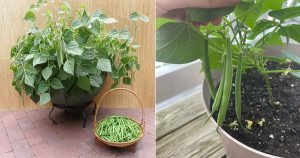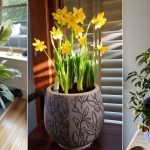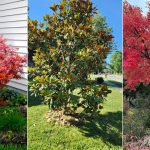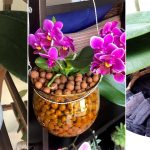I’m not really sure who has selected a group of 11 garden bloggers and asked them about their six “can’t live without” plants, but they didn’t ask yours truly. How rude! ![]() Well, I thought I would crash the party (at the open invitation of the folks at Fresh Dirt) and share my favorites anyway. Being the rule breaker that I am, I wasn’t able to narrow my picks to just six, so instead I listed six “spiller” plants, six “thrillers,” and six “fillers.”
Well, I thought I would crash the party (at the open invitation of the folks at Fresh Dirt) and share my favorites anyway. Being the rule breaker that I am, I wasn’t able to narrow my picks to just six, so instead I listed six “spiller” plants, six “thrillers,” and six “fillers.”
Spillers
Spillers are plants that will cascade over the side of a pot, softening the edges.
- Sweet Potato Vine (Ipomoea batatas)- Maple-like leaves on lush, full plants. Comes in lime green and chocolately-purple colors.
- Creeping Jenny (Lysimachia nummularia)- My favorite small-leaved, lime green spiller. It forms pretty cascades of green leaves the size of quarters.
- Burro’s Tail (Sedum morganianum) – A great succulent spiller that doesn’t try and take over the pot. Pretty blue-green ropes of fat succulent leaves.
- Deadnettle (Lamium) – A great spiller for even pretty dark shade. All the varieties I’ve seen have either lime green or white variegated leaves, which is nice to add some punch to shady gardens. Small pink or purple flowers are an added bonus.
- Ground Ivy – If you don’t mind constantly cutting back a plant (harshly!), the pretty half-round leaves of ground ivy look nice spilling over the edge of a pot. I would never, ever plant this in an in-ground garden though. It is very invasive!
- Creeping Thyme – The tiny leaves of Creeping Thyme are great for pots featuring only edible plants, or for those that you’ll occasionally brush up against (they give off a nice spicey scent).
Fillers
Fillers are plants that make a pot feel lush without stealing the show.
- Artemesia – I think of the silver Artemesia as Dusty Miller’s fancy cousin. It’s finely-cut silver leaves are more sophisticated and classy than it’s country cousin (which I still love).
- Coleus – Some varieties of coleus could really be thrillers, but I prefer using them as a filler in shady pots. Their leaves come in colors like orange, green, magenta, and deep maroon.
- Dill – Feathery, finely-cut leaves make a nice contribution to edible containers without demanding too much attention.
- Santa Barbara Daisies (Erigeron karvinskianus) – I’m not usually a big fan of daisies (and the other plants we call daises but aren’t really in the same family) but I really love Santa Barbara Daisies (also called Fleabane) and other small-flowered, mounding daisy varieties. They’re pretty without being attention whores. And bees and other beneficials love them.
- Caladium – Some caladium are a bit too showy to be fillers, but their interesting leaf shape and their bushy shape make them great fillers.
- Swiss Chard – If you’re looking for a filler in an edible container (or an ornamental one) Swiss Chard is a great option. Cabbage and Kale are also good choices.
Thrillers
- New Zealand Flax (Phormium) – There are so many varieities of Flax it’s hard to make a pithy statement about them, but their rigid upright leaves in striking bronze or variegated colors are definite show stoppers.
- Canna – There is a lot of variation among Cannas as well, but for thriller status, look for one with unusual flower colors or striped leaves. There is even a black-leaved varieties called ‘Black Knight’ and ‘Australia.’
- Elephant Ears (Colocasia) – For large pots, it’s hard to find something more dramatic than a gigantic (and I do mean gigantic!) Elephant Ear plant. Imagine heart-shaped leaves as big as basketballs or even larger.
- Bougainvillea – Not suitable for every area, but for hot, dry areas, Bougainvillea is great. There are many varieities from the traditional green-leaved, magenta flowered vines to more tame shrubs with variegated leaves and apricot colored flowers (technically “brachts”).
- Ornamental Banana – Another plant that is more suited to climates like mine than northern areas, but how can you not love gigantic tropical leaves? Check out the Red Abyssinian.
- Roses – Roses are probably one of the few plants that never really need an introduction. They’re generally suitable for growing in pots, so long as the pot is large enough (think at least two times bigger that the nursery pot).




